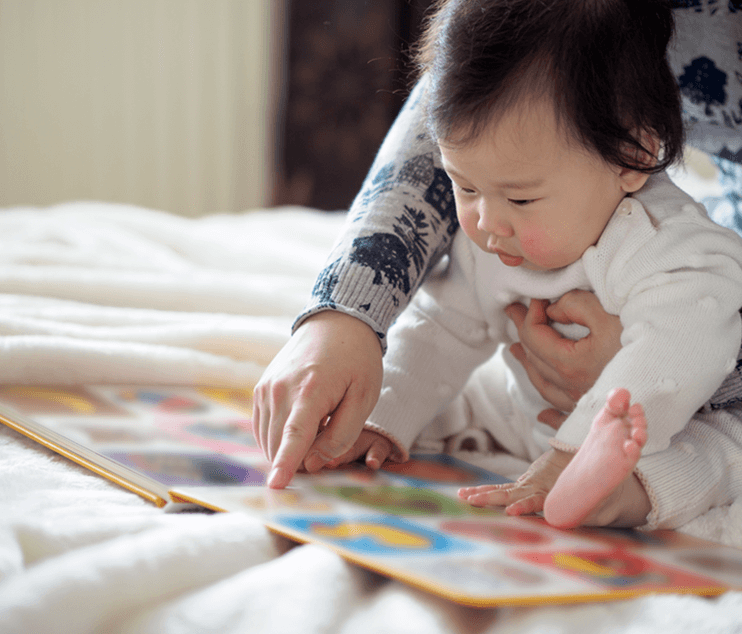
Tenemos que hablar
- Home
- Live Well Blog
- Tenemos que hablar
Aunque aún no las haya dicho, tu bebé ya aprendió algunas palabras. Cuando le hablas, lo ayudas a entender qué significa cada palabra y cómo usarla para comunicarse. De hecho, hablarle ayuda a desarrollar su inteligencia. Saber usar las palabras le permitirá a tu hijo aprender a hablar, leer y escribir y lo preparará para triunfar en la vida.
Según estudios, el mejor indicador del desempeño futuro en la escuela de un niño no es su origen étnico, la situación económica de sus padres ni el nivel de educación que reciba, sino la calidad y la cantidad de palabras que escuche decir en sus primeros tres años de vida. Los padres tienen la llave para abrirles a sus hijos una puerta hacia el éxito cuando crezcan ¡y lo único que tienen que hacer es hablar!


EMPIEZA A HABLAR
- Desde que nazca, háblale a tu bebé tan seguido como puedas.¡Es así de simple!
- Háblale sobre lo que haces, lo que comes y lo que ves.Cada palabra que dices importa: ¡tu bebé te escucha!
- No es difícil encontrar el momento para hablarle a tu hijo durante la rutina diaria. Háblale sobre lo que ves cuando andan en auto, cuando viajan en autobús o cuando están haciendo compras. Háblale durante la comida o el baño. Cántale una canción infantil mientras le cambias el pañal.
LEE, CANTA, JUEGA
- Nunca es demasiado pronto para empezar a leerle a tu hijo.Haz preguntas mientras le lees un cuento y háblale sobre los dibujos que ves en el libro. “¿Es este un gato? Este gato se parece al nuestro”.
- Enséñale a tu hijo a resolver problemas hablándole mientras juega. Puedes decir algo como “¿Se cayeron los bloques?” o “¿Esa pieza es muy grande?”.
- Cántale canciones simples, como canciones infantiles o del abecedario, para que tu hijo aprenda distintos sonidos y ritmos.
- Pon música infantil, pero a un volumen bajo, ya que la música fuerte puede dañar la audición de los bebés.


AHORA TE TOCA ESCUCHAR
- Cuando tu bebé empiece a balbucear y decir sus primeras palabras, habrá llegado el momento de que tú lo escuches.
- Haz contacto visual, dale tiempo para que termine lo que quiere decir y siempre respóndele: así lo animarás a seguir hablando.
- Ayuda a tu bebé a desarrollar su habilidad de escuchar.Motívalo a escuchar los diferentes sonidos que se oyen afuera (como los pájaros o autos) y adentro de casa (el agua que corre o el timbre).
RE-RE-REPITE
- ¡Aprender a hablar no es tan fácil! Enséñale a tu hijo cómo pronunciar nuevas palabras de forma correcta repitiéndolas despacio. Por ejemplo, si dice “Pero come”, respóndele: “Sí, el perro se lo comió, ¿no?”.
- Ayuda a tu hijo a usar más palabras agregándolas a lo que dice.Por ejemplo, si dice “Pelota”, puedes responderle: “Sí, una pelota roja”.
- ¡No dejes de hablar! Los niños pueden tener que escuchar varias veces una palabra nueva para aprenderla o decirla.
